
|
JAPANESE PRINTS A MILLION QUESTIONS TWO MILLION MYSTERIES |
Ukiyo-e Prints浮世絵版画 |
|
Port Townsend, Washington |
|
A CLICKABLE INDEX/GLOSSARY (Hopefully this will be an ever changing and growing list.)
J thru Kakure-gasa |
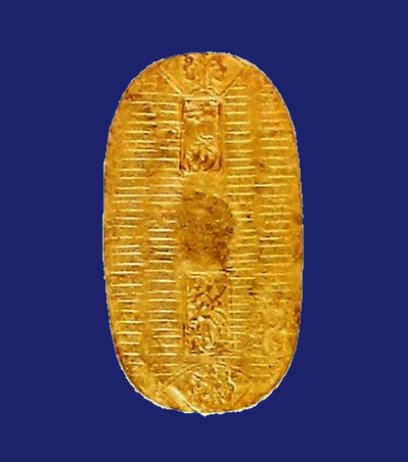
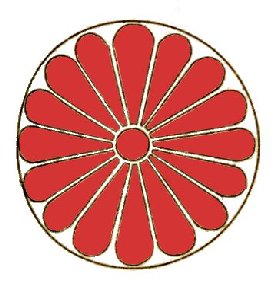
|
|
The gold koban coin on a blue ground is being used to mark additions made in June 2008. The red on white kiku mon was used in May. |
|
|
|
TERMS FOUND ON THIS PAGE:
Jakago, Janome, Janome-gasa, Jesus, Jigoku, Jigoku Dayu, Jimbaori, Jiraiya Goketsu Dan, Jisei, Jitsubushi, Jizai kagi, Jizo, Joichi Hoshi, Joy of Cooking, Jūnihitoe, Jūnishi, Juzu, Kabuki-za, Kaede, Kaemon, Kagami, Kagami biraki, Kagami mochi, Kagaribi, Kagema, Kago, Kagome, Kaguyama, Kai awase, Kaiba, Kaji, Kaji no ha, Kaishi, Kake-gō, Kakejiku, Kakemono, Kake soba, Kaki, Kakihan, Kaki shibu, Kakitsubata and Kakure-gasa
蛇籠, 蛇の目, 蛇の目傘, 地獄, 地獄太夫, 陣羽織, 児雷也豪傑譚, 辞世, 地潰し, 自在鉤, 地蔵, 襄一星, 十二単衣, 十二支, 数珠, 歌舞伎座, 楓, 替紋, 鏡, 鏡開き, 鏡餅, 篝火, 蔭間, 駕篭, 籠目, etc.
|
|
|
TERM/NAME |
KANJI/KANA |
DESCRIPTION/ DEFINITION/ CATEGORY Click on the yellow numbers to go to linked pages. |
|
Jakago |
蛇籠
じゃかご
|
Gabion: Wicker containers which are filled with stones to help prevent erosion along breakwaters, jetties or river banks.
The image to the left above shows a detail of a Kuniyoshi bijin wearing a robe decorated with gabions. The one to the left below was sent to us by our generous contributor Eikei (英渓). It is a detail from a print by Sadahide ca. 1847-8 showing a fellow sitting by a river lined with jakago. Thanks Eikei!
|
|
Janome |
蛇の目
じゃのめ
|
Bull's eye or snake's eye motif used as a family crest or mon. It is also the name of a type of umbrella which has that design as part of its structure. At the left are just two of the variations of this motif.
The kanji character 蛇 by itself means 'snake'.
"This motif was originally called tsurumaki, or 'bowstring spool,' because of its resemblance to the device on which warriors wound their bowstrings when the bow was unstrung. The spool was generally hung from the warrior's waist from his large sword by a loop run through the hole in the spool center."
Quote from: The Elements of Japanese Design, by John W. Dower, p. 134.
|
|
Janome-gasa |
蛇の目傘
じゃのめがさ
|
"...it is not surprising varied according to gender, rank and even geography... The janome (snake's-eye) type with black, brown, or indigo paper and a white center band came into fashion around the Genroku era (1688-1703); orange and red janome seem to have become popular much later. Among men, the janome was rarely used by the samurai class but was favored by monks and doctors. In the Osaka-Kyoto region, janome were used by women of samurai status; their umbrellas, always held by female servants, had long sticks and large covers. In Edo, however, even if a woman had two or three servants, she carried her own umbrella, and the stick was accordingly shorter."
Quote from: Rain and Snow: The Umbrella in Japanese Art, by Julia Meech, published by Japan Society Inc., 1993, p. 52.
The image to the left above is a detail from a print by Kiyochika from 1876 while the one below is from a print by Kunisada showing an actor carrying a janome from the 1830s.
|
|
Jesus |
イエス |
Self explanatory 1 |
|
Jigoku |
地獄 じごく |
The Japanese name for hell |
|
Jigoku Dayu |
地獄太夫 じごくだゆう |
The Hell Courtesan, a possibly fictitious figure whose encounters with the Zen monk Ikkyu became the subject of novels, plays and fine art pieces. 1 |
|
Jimbaori |
陣羽織 じんばおり |
A formal surcoat worn over armor either for ceremonial purposes or else on the battlefield. Originally designed for more practical use as protection against foul weather and the cold, but in time these jackets became elaborate status symbols often decorated with a family crest or mon with strong design which could be seen clearly at some distance. |
|
Jiraiya Goketsu Dan |
児雷也豪傑譚 じらいやごうけつだん |
"Conversations about the Hero Jiraiya" 1 |
|
Jisei |
辞世 じせい |
Death poem |
|
"In Japan, as elsewhere in the world, it has become customary to write a will in preparation for one's death. But Japanese culture is probably the only one in the world in which a 'farewell poem to life' (jisei) took root and became widespread."
Quote from: Japanese Death Poems: Written by Zen Monks and Haiku Poets on the Verge of Death, compiled with an introduction and commentary by Yoel Hoffmann, Charles E. Tuttle Company, 1986, p. 27.
"Poems written just before death appear in the most ancient Japanese sources, including the Kojiki, the Man'yoshu, and the Kokinshu."
Ibid., p. 44.
"At the moment of death, say followers of the Jodo sects of Buddhism, the dying person is greeted either by Amida, the Buddha of Everlasting Light, or by Kannon, the Bodhisattva of Compassion and Love. Anyone who call the name of Buddha before dying is reborn in the Pure Land in the West."
Ibid., p. 66.
There is a shini-e or memorial print by Kunichika dedicated to his master Kunisada. It shows several poems by devoted pupils. However, "The poem on the far left is Kunisada's death verse (jisei), signed 'The Old Man Toyokuni, aged seventy-nine,' in which the artist expresses his faith in Amida (Mida), the lord of the Western Paradise..."
Quote from: Kunisada's World, by Sebastian Izzard, Japan Society, Inc., 1993, cat. #100, p. 189. |
||
|
|
||
|
Jitsubushi |
地潰し
じつぶし |
A background printed in a single color. This may involve layering of different colors or of the same color, but the end product leaves a relatively flat printed ground.
The image to the left is a detail from a Yoshikawa Kanpō (1894-1979: 吉川観方 or よしかわ・かんぽう) print. |
|
|
自在鉤
じざいかぎ |
Pot hook: An height adjustable mechanism for hanging a pot over a fire traditionally found in most Japanese homes from those of peasants on up. There are two different kanji characters used for kagi. One means 'hook' [鉤] and the other means 'hanger'.
|
|
Jizō |
地蔵
じぞう |
Patron saint of children and travelers: Jizō is the Japanese name for the bodhisattva Ksitigarbha. There are ten variant manifestations of Jizō, perhaps more. One is to oversee the safety of souls who have died until the coming of the next Buddha. "...there is also a Jizo who is especially named Ko-sodate-Jizo [子育て地蔵 or こそだてじぞう] (children raising Jizo). It is said that when children die, they go to the banks of the Sanzu River, but as they play there, devils come to disturb them. Then Jizo arrives to protect these children."
This is an interesting contrast to the Christian belief that everyone is born into original sin and has to be baptized for the soul to be properly saved.
The image to the left is from a tattoo on the back of someone who wishes to remain absolutely anonymous, unless, of course, he/she/it shows it to family, friends, colleagues, strangers, Wookies, etc. No matter who or what sees it - including you - I want to thank the Jizō wearer for having submitted it to this site. We needed a good example for these pages. Thanks Anonymous! (Note the children gathered around the feet of this bodhisattva frolicking within the petals of the lotus flower.) |
|
Joichi Hoshi |
襄一星 じょういちほし |
Artist 1913 - 1979 |
|
Joy of Cooking |
|
Soba recipes 1 |
|
Jūnihitoe |
十二単衣 じゅうにひとえ |
The ""twelve-layered" formal robe worn by high ranking women of the Heian court. Also referred to as a karaginumo (唐衣裳 or からぎぬも). |
|
Jūnishi |
十二支 じゅうにし |
The 12 signs of the zodiac. These include the rat, ox, tiger, hare, dragon, snake, horse, goat, monkey, cock, dog and boar.
Later Williams notes that "Professor Chavannes has written a learned article to prove that the group known as the Twelve Animals was borrowed fromt eh Turks, and was used in China as early as the first century of the Christian era..."
Quote from: The Norton History of Astronomy and Cosmology, by John North, W. W. Norton & Company, 1995, p. 39.
|
|
Juzu |
数珠
じゅず |
A Buddhist roasary: "Buddhist rosaries, have 108 beads, symbolizing the 108 worldly sins. One moves each bead in prayer to be saved from committing the particular evil it stands for." This originally accompanied the prayer namu-amidabutsu or "May the soul rest in peace." For practical purposes there are shorter strings of 54, 27 or even as few as 14 beads. The example shown to the left appears to be one of those. A shortcut to going through all the beads individually can be made simply by holding them or by clasping them between hands held together in prayer in various configurations. In this case the longer strands are frequently wound around the hand for convenience sake.
"Juzu beads are generally made of iron, copper and gold alloy, crystal, coral, amber, glass, various kinds of hard and fragrant wood and many other materials." Kyoto was known for the production of these items and some of them could be quite expensive.
Source and quote from: Mock Joya's Things Japanese, p. 514.
Last night, February 15, 2006, I was reading a passage in a novel which helped reinforce one of the points of information made above: "To keep count of the thousands of paces, Huree Chunder's experience had shown him nothing more valuable than a rosary of eighty-one or a hundred and eight beads, for 'it was divisible and sub-divisible into many multiples and sub-multiples."
Quote from: Kim, by Rudyard Kipling, Penguin Books, 1989, p. 211. 1 |
|
Kabuki-za |
歌舞伎座 かぶきざ |
A major kabuki theater in Tokyo 1 |
|
Kaede |
楓
かえで |
Maple leaf: John W. Dower in his The Elements of Japanese Design (p. 62) notes "...the word for maple, is itself suggestive - the pronunciation puns on 'frog's foot,' which is how the ancients apparently described the leaf, while the single ideograph used is made up of the elements for tree and wind, conveying a rather gentle image of rustling foliage." |
|
Kaemon |
替紋 かえもん |
An alternate or substitute crest meant specifically for use by only one actor. For example, a crane was used by Utaemon III while Danjūrō VII's was a peony and Kikunojō V's was a chrysanthemum. For a more general use see our entry on mon. |
|
Kagami |
鏡 かがみ |
This is the Japanese word for mirror, but it is often used in a metaphorical or more expansive sense in reference to print titles. |
|
Kagami biraki |
鏡開き
かがみびらき |
It might be best if you read the entry on kagami mochi below first.
The kagami biraki is the ritual breaking of the mochi created for the New Year's celebration. It is allowed to harden in the open air for a number of days. Due to a natural process of desiccation this stack of rice cakes often shrinks somewhat and cracks too. Then on different days across Japan - starting around January 11th and in the following days - based on local custom the kagami mochi is broken up either by hand or by hammer. It would seem that cutting the stack might well be considered a bad choice among traditionalists. The crumbled pieces can then be put into several different types of soups and ingested in the hope that this will bring good luck and protection throughout the new year.
The graphic to the left was created especially for us by David Wilcox. Thanks David! I think it looks great and I'm picky. |
|
Kagami mochi |
鏡餅
かがみもち |
A "...big fat round rice cake in the traditional shape of a mirror (kagami). Two or three of these cakes, of different sizes, one on top of the other, form the basis of the New Year decoration in homes." Topped with bitter orange (daidai), dried persimmons (kaki), kelp (konbu) or any one of an assortment of other traditional items. "On January 11 the cakes are usually cut up and served in zōni [mochi in soup] or shiruko [a sweet soup].
Quotes from: A Dictionary of Japanese Food: Ingredients and Culture, by Richard Hosking, Charles E. Tuttle Company, 1996, p. 67.
Now here is the rub: In a web site devoted to children kagami mochi is discussed with definite clarity and it states that this now hardened New Year's decoration is definitely not cut because that has such bad connotations. Instead they say that it is broken up by hand or smashed with a hammer - as though that wouldn't have bad connotations too. This ceremony is referred to as kagami biraki (鏡開き or かがみびらき).
Now here is another rub: When looking up the definition of kagami biraki the very credible sites I checked referred to it as the cutting up of the mochi. They all can't be right. Moral: Never trust your sources including this one.
On New Year's Eve I received an e-mail from C. S. complimenting me my work on this web site and wishing me a happy holidays. C. S. had found the site through a search on Google on mochi pounding. For that reason I am dedicating this first index/glossary entry for 2006 to C. S. Keep them coming please. Thanks C. S.!
The graphic to the left was created especially for this site by David Wilcox. Thanks David! Great design. |
|
Kagaribi |
篝火
かがりび |
A bonfire, watch fire or a fire on a tripod stand used in night fishing. The detail to the left is from a print by Eisen illustrating cormorant fishing. See our entry on ukai for further information.
The rod used to hold the fiery basket is called a kagaribo (篝火棒? or かがりび.ぼう). |
|
Kagema |
蔭間 かげま |
A cross-dressing professional homosexual prostitute. |
|
Kago |
駕篭
かご |
A palanquin or litter used for travel. The roads were tamped down, but unpaved and wheeled vehicles were not used generally prior to modernization starting in the late 19th century. One author noted that when Westerners started arriving in Japan after Perry's visit they found these litters very uncomfortable. They were too squat as carriers for the traveler to sit up straight and too short for them to straighten their legs. 1 |
|
Engelbert Kaempfer's History of Japan was published in London in 1727 and remains a good source to this day. In a modern, 1999 edition published by the University of Hawaii Press and edited by Beatrice M. Bodart-Bailey we read on pages 245-6: "...I must mention that people also travel by kago, or palanquins: this is the most elegant way to travel and is also used in the cities for outings. Distinguished people use them for show, ordinary people out of necessity. But there is a big difference between the palanquins of eminent people and those of the lower orders. The former are magnificent and precious structures and are especially referred to as norimono, while the latter are far inferior and are called by the common name of kago." Kaempfer makes a linguistic distinction between the two telling us that the norimono is "a thing to sit in" while the kago is a "basket to carry". "Both exist in so many different types and classes that I cannot distinguish a bad norimono from a beautiful kago, except for the pole on which it is carried." The kago uses a poor, solid pole and the norimono uses a pole which is "...large, handsome and solid." [For more on norimono go to that entry on our Mom thru N index/glossary page.]
In Yoshiwara: The Nightless City by J. E. De Becker (pp. 18-19) there is a curious reference to restrictions put on use of kago and norimono entering the pleasure district of Edo. Up until the Meiji Restoration in 1868 only physicians could ride in palanquins within the confines of licensed brothel district. Why? Originally this quarter was located out in the boonies and I can imagine that a person of some wealth might want to be carried there, but why would they have to disembark upon arrival when doctors didn't have to? It is not that the district was so large that walking its streets would be irksome. This is a puzzler. If you have any ideas please contact me.
Many visitors to the New Yoshiwara arrived via travel atop the Dike of Japan or Nihon zutsumi (日本堤 or にほんづつみ). As you can see from the Hiroshige detail below there is a lot of activity including several kago heading toward the Yoshiwara. Each carried by two porters, with shades pulled down provide a degree of privacy. On the right you can also see a single porter transporting an empty kago back to its starting point to pick up a new customer.
Judging from the De Becker's citation above only a physician can be carried into the Yoshiwara itself. Everyone else has to disembark outside of the Great Gate. However, there is no way of knowing whether one of Hiroshige's kago is carrying a doctor. Odds are that it isn't considering the size of the traffic flow. But who knows?
|
||
|
|
||
|
Kagome |
籠目
かごめ |
Woven bamboo pattern |
|
Kaguyama |
香具山
かぐやま |
Mount Kagu: There is a hill near Nara which has an incredible history both real and mystical. Although it is truly low in elevation it is nevertheless considered one of the "Three Mountains of Yamato" or Yamatosanzan along with Mt. Unebi (畝傍 or うねび) and Mt. Miminashi (耳成 or みみなし). In the Kojiki it is the place where the sun goddess, Amaterasu (天照 or あまてらす), locks herself away in a cave and cosmos is plunged into darkness. Eventually she was lured from her seclusion by a raucous gathering of the gods. As soon as she emerged her retreat is cut off and since then there has been light - at least part of each day.
Kagura (神楽 or かぐら), the sacred music and dance of Shinto, owes its origins to the performance which drew Amaterasu out of her hiding place.
The sakaki (榊 or さかき)or sacred tree which is used in Shinto rituals is also said to have originated here. |
|
The image shown above is a detail from a print by Hokusai. It is meant to illustrate the second poem of the Hyakunin Isshu (百人一首 or ひゃくにんいっしゅ) or "One Hundred Poets, One Poem Each".
In Peter Morse's Hokusai: One Hundred Poets published by George Braziller, Inc. in 1989 the translation of the poem by Jito Tenno is considerably different on two points than the one by Joshua S. Mostow in his Pictures of the Heart: The Hyakunin Isshu in Word and Image. This is understandable because of the flexibility of the Japanese language and its frequent use of puns or alternate readings. However, Morse's reading provides an additional layer of information. He does not refer to this hill as Kaguyama, but rather calls it the "Mount of Heaven's Perfume."
"Heaven's Perfume Mountain is a hill, southeast of Nara and visible from the city, supposedly shaped like a perfume flask. (Nara was not yet the capital when the poem was written.) It is said that in the summer the villagers spread their clothing on the slopes to dry after the cold and damp winter storage.... The poet...suggests that the immortals themselves have spread their summer clothing on Mount Ama-no-kagu. There is also a humorous undertone of white underclothing spread in the sun, still holding traces of winter perfume."
Morse continues: "In Japanese, ama is 'flax' as well as 'heaven'. Kagu is any kind of smell, depending on its context. To peasant women, ama-no-kagu did not mean 'heaven's perfume': it meant 'the stench of flax.'" |
||
|
|
||
|
Kai awase |
貝合せ
かいあわせ |
The shell matching game 1 |
|
Kaiba |
海馬
かいば |
Sea horses "...are connected to folk beliefs about marriage, childbirth, and sexual potency.... Packets containing a pair of sea horses, one male and one female, were sold as amulets to be held during childbirth. They are also said to aid in curing impotence."
Quoted from: Jewels of Japanese Printmaking: Surimono of the Bunka-Bunsei Era 1804-30 by Joan Mirviss and John Carpenter - cat. entry #10, p. 56. |
|
Kaishi |
懐紙
かいし |
A packet of tissues: Often used for wrapping sweets, while serving tea or for applying or removing makeup. However, in the case of ukiyo prints featuring bijin or beautiful women it often has a more salacious meaning fraught with sexual undertones.
Kaishi is also the term used to describe the paper on which tanka are written. A tanka (短歌 or たんか) is a short poem of 31 syllables on 5 lines of 5-7-5-7-7-7. |
|
Kaji |
梶
かじ |
Mulberry: an interesting word. Properly kaji (梶) translates as an oar or shaft and not as mulberry. However, kaji no ki (かじの木) is a mulberry tree. But then to confuse the matter even more kaji ki translates as a swordfish or marlin. Where in the heck did that one come from. Someone out there reading this must be a student of Japanese etymologies. If so, please contact me and help me to understand this.
Kuwa (桑 or くわ) is the term used for mulberry tree.
According to John W. Dower in his The Elements of Japanese Design (p. 64) "In ancient times the leaf of the kaji, or 'paper mulberry,' was used to make receptacles for offerings of food at Shinto shrines... In the late Heian period, court ladies used the leaf to write poems on... However, it was predominantly the religious associations of the mulberry which lay behind its fairly widespread adoption as a family emblem." |
|
Kaji no ha |
の葉 かじのは |
Mulberry leaves |
|
Kake-gō |
掛香 かけごう |
A bag of aromatic incense worn by a courtesan meant to mask body odors. It is also called a nioi-bukuro (匂い袋 or においおぶくろ).
Source: The Passionate Art of Kitagawa Utamaro, published by the British Museum Press, London, 1995, Text volume, p. 146.
|
|
Years ago I couldn't help but notice that particularly offensive odor of someone who had tried to mask their failure to bathe frequently by the continuous applications of deodorants. Old Spice, Mitchum, Right Guard, Irish Spring - a soap so good you wouldn't need a deodorant - were all products promoted for greater social acceptability. In fact, one deodorant ran a commercial on television showing a sexy hunk who stated something like "I didn't use my deodorant yesterday and I may not today" with the obvious inference that their product was so good that... No sweat!
In medieval, Renaissance and Enlightened Europe and later the upper classes - who wore tons of clothes and didn't bathe very often themselves - always wore or carried expensive and elaborately tooled pomanders or vinaigrettes so they could hold them to their noses whenever confronted by the rabble. These containers held the most aromatic herbs known to man at the time and were meant to make life just a little more bearable. Obviously the Japanese kake-gō were meant to do the same. |
||
|
|
||
|
Kakejiku |
掛軸 かけじく |
A hanging scroll |
|
Kakemono |
掛物 かけもの |
A hanging scroll or vertical oban sized woodblock prints made in imitation of a hanging scroll's painting. The latter were often mounted like paintings. |
|
Kake soba |
掛け蕎麦 かけそば |
Soba in hot broth 1 |
|
Kaki |
柿
かき |
Persimmon 1 |
|
Kakihan |
書判
かきはん |
Originally referred to as kaō (花押 or かおう) they were "Personal marks or signs that developed from signatures and were used in place of signatures on a vast range of documents, public and private. The word kaō is a compound of two Chinese characters: ka, or 'flower,' and ō, to impress one's signature; together they convey the sense of 'a beautiful, flowerlike signature'." Kakihan literally means 'written seal.'
Source and quote from: Kodansha Encyclopedia of Japan, vol. 4, entry by Noburu Hiraga, p. 155.
Japanese woodblock print artists of the 18th, 19th and 20th century often used these seals, but not always and not always in ways that are easily decipherable.
The image to the left is a detail from a Shoson print. To see the full image click on the number to the right. 1 |
|
Kaki shibu |
柿渋 かきしぶ |
Persimmon juice used as an astringent 1
Used in the making of katagami or paper stencil for dye-resist fabric production and for water proofing of karibari (仮張り?) which is a wooden lattice frame upon which silk, scrolls and papers are laid out to dry. Today karibari are being used by modern institutional conservators. |
|
Kakitsubata |
杜若
かきつばた |
Iris: A sweet little volume could be written about the iris in Japan. Merrily Baird in her Symbols of Japan: Thematic Motifs in Art and Design (pp. 84-5) notes that there are three types of irises, the ayame (菖蒲 or あやめ), hanashobu (花菖蒲 or はなしょうぶ) and kakitsuba, found in Japan and one very iris-like plant, the shobu (菖蒲 or しょうぶ). The kakitsubata "...although cultivated, is best known...as a wild plant growing in damp areas and alongside bodies of fresh water. It is the iris most celebrated in Japanese poetry and art, being combined with plank bridges in a design, known as yatsuhashi, that alludes to the Tales of Ise literary classic... The plant also serves as a family crest."
The image to the left is one of a number of variations on the iris theme which were used for family crests or mons. |
|
Kakure-gasa |
隠れ笠
かくれがさ |
A hat of invisibility. One of the symbolic lucky treasures. Often seen along with other treasures as decorations on ceramics, fabrics and other items. |
|
|
A thru Ankō |
|
|
Aoi thru Bl |
Bo thru Da |
De thru Gen |
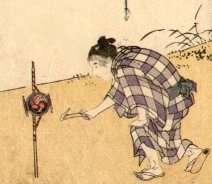 Ges thru Hic |
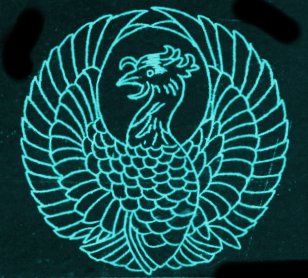 Hil thru Hor |
|
Hos thru I |
Kakure-mino thru Ken'yakurei |
Kesa thru Kodansha |
Kōgai thru Kuruma |
Kutsuwa thru Mok |
|
|
Mom thru N |
|
3.jpg) O thru Ri |
Ro thru Seigle |
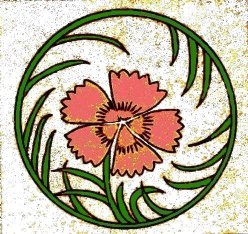 Sekichiku thru Sh |
Si thru Tengai |
Tengu thru Tsuzumi |
|
|
Yakusha thru Z |
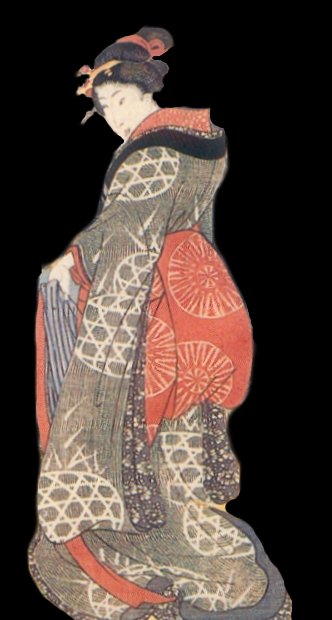
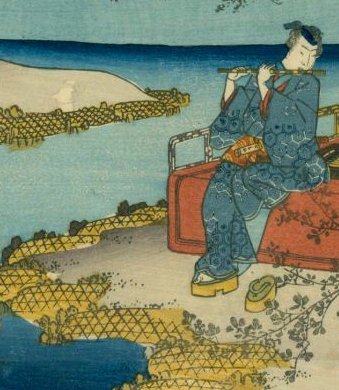
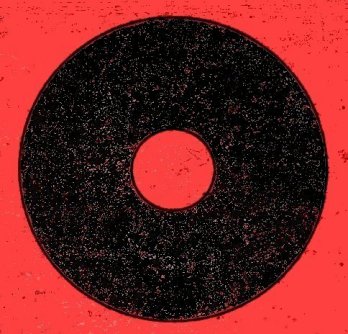
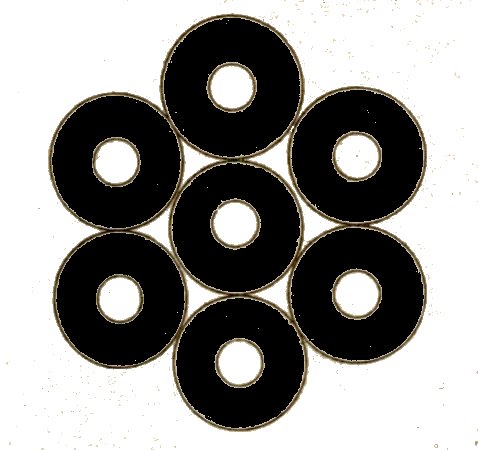
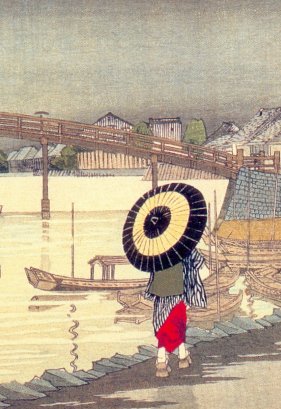
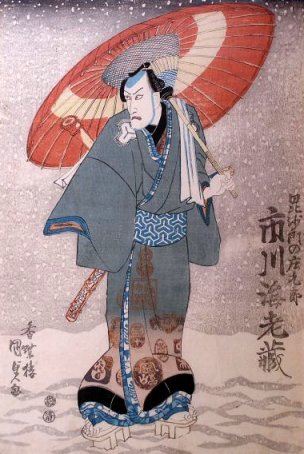
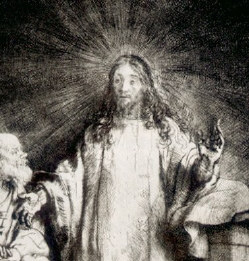
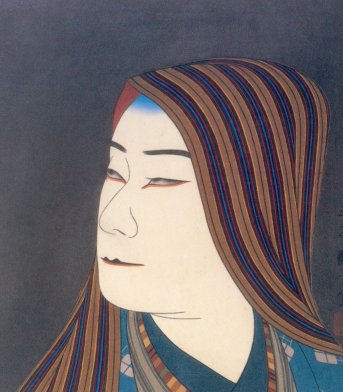

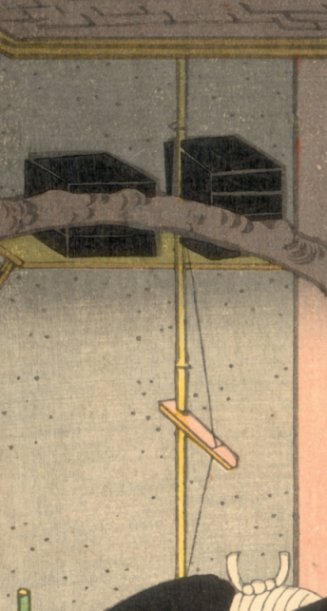
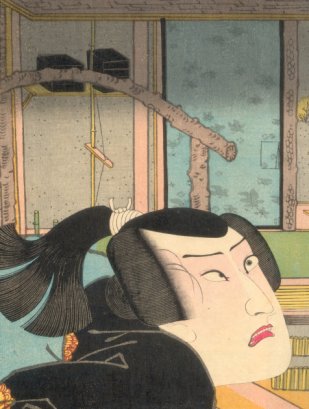
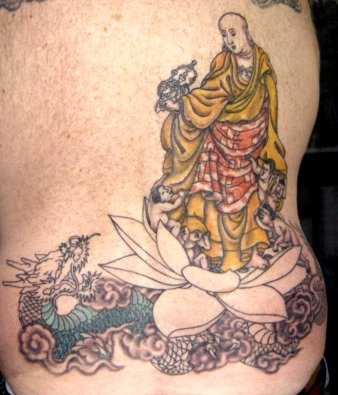
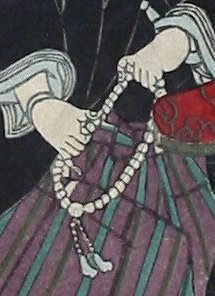
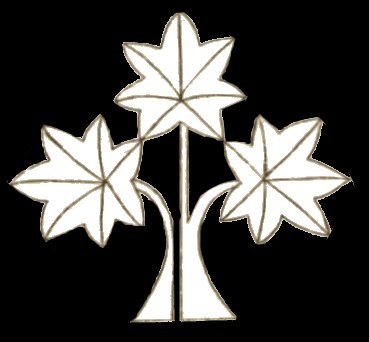
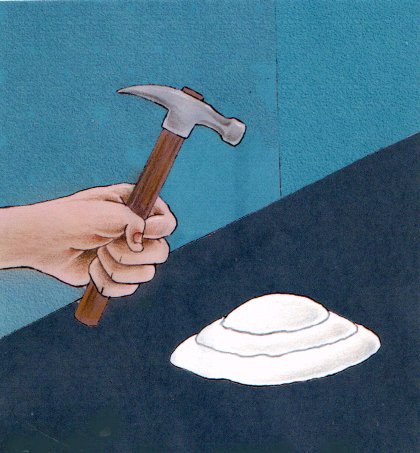
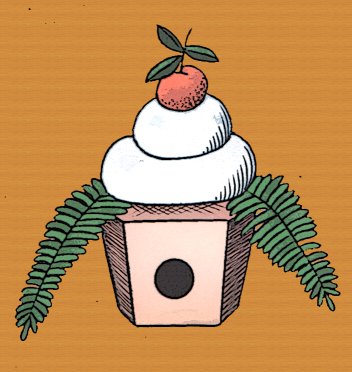
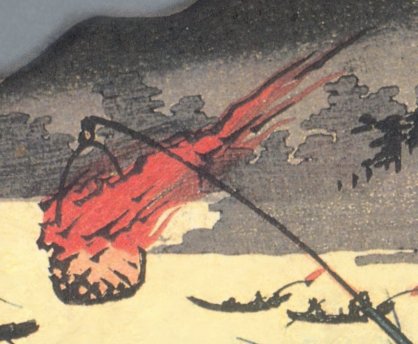
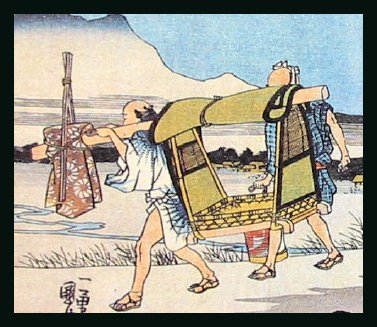
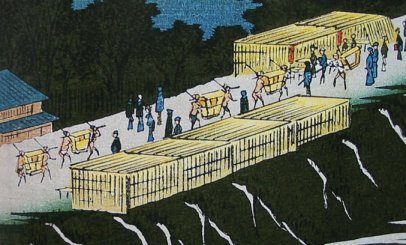
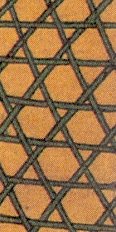
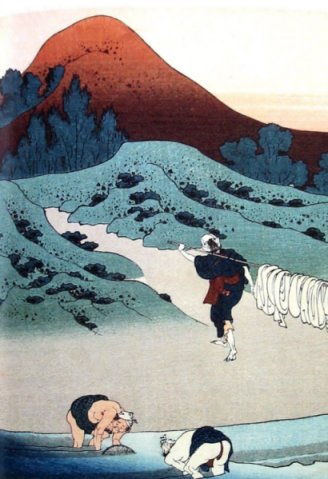
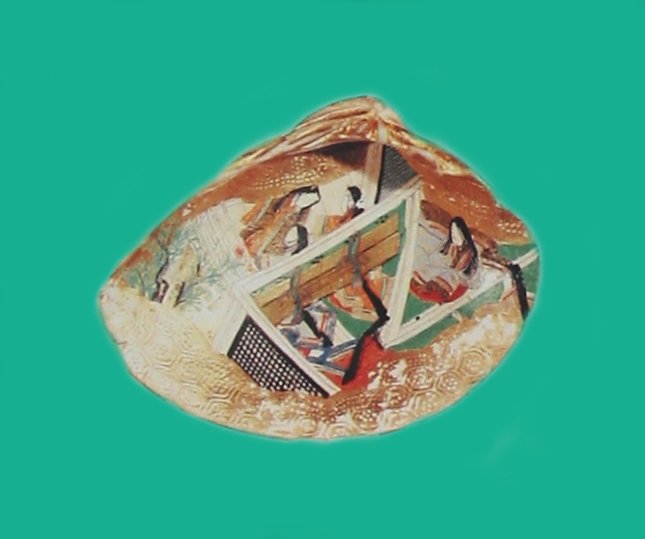
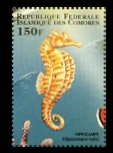
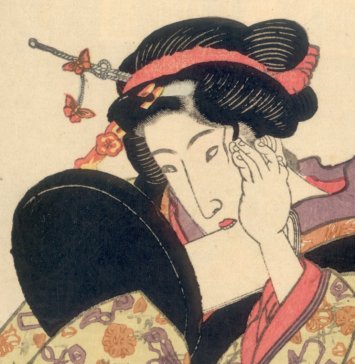
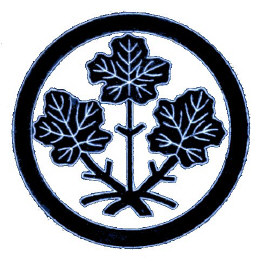
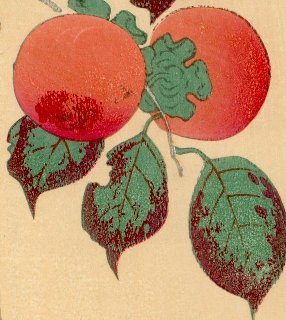
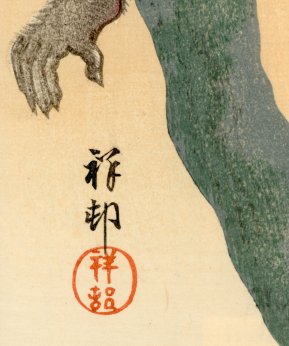
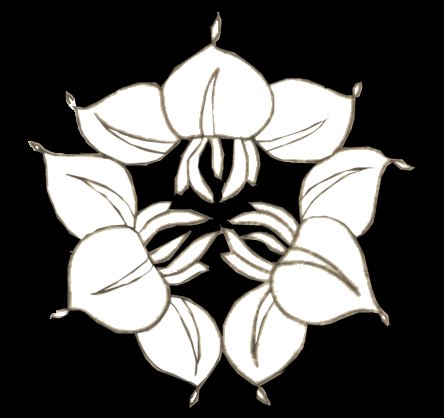
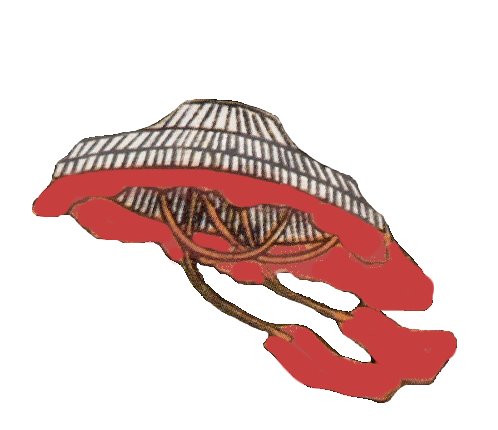
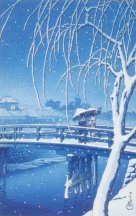
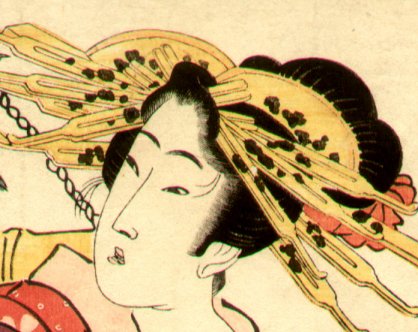


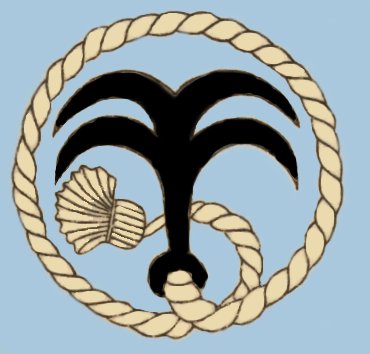
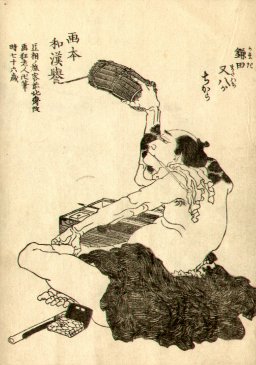
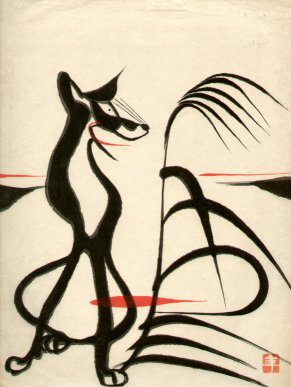
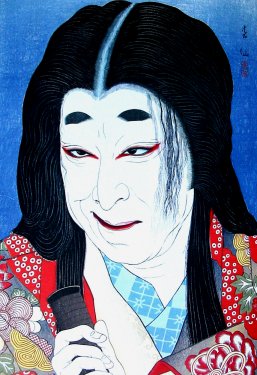
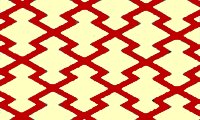
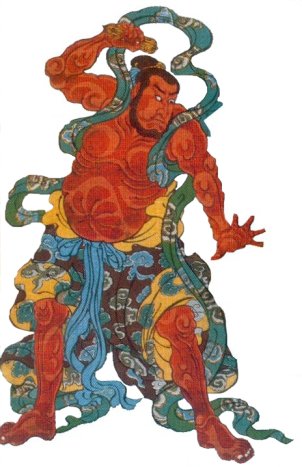
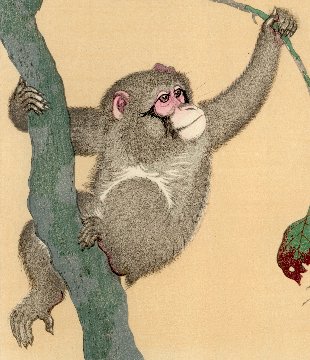
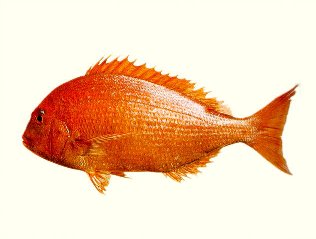
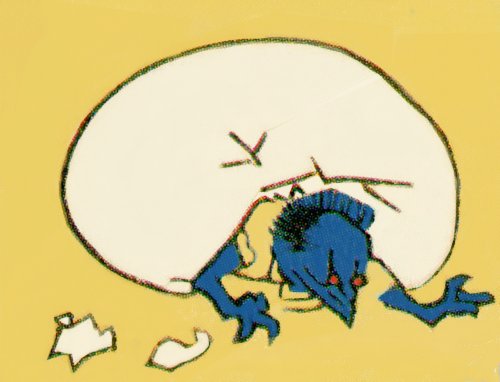
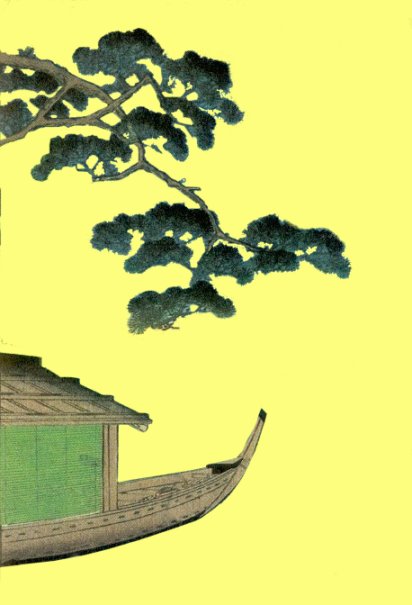
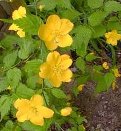
 HOME
HOME